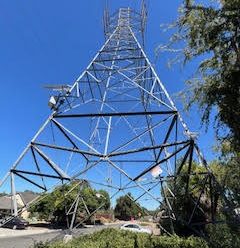Mold Is One Of The Most Important And Potentially The Most Expensive Of Real Estate’s Four Letter Words!
We have all heard the real estate horror stories about mold and water intrusion. Stories describing people forced out of their homes because the amount of mold in the home made it unsafe for habitation. Stories written about those who have allergies and the devastating health effects that black mold has had on them. Stories written about the massive judgments awarded in lawsuits to the victims of mold exposure. As a Realtor, I have attended numerous legal seminars on the subject. I have learned how to protect my clients and myself from mold related lawsuits. Disclose, disclose, disclose the presence of mold, but don’t call it mold.
The Statewide Buyer and Seller Advisory states:
“Buyer and Seller are advised that the presence of certain kinds of mold, fungi, mildew and other organisms, sometimes referred to as “toxic mold” (collectively “Mold”) may adversely affect the Property and the health of individuals who live on or work at the property as well as pets.”
Basically, mold is bad and potentially undetectable unless the property is tested by a specialist. Does this mean that every (or any) home should have a mold inspection during the buyer’s inspection contingency? Yes and no. I know that’s a mind shattering answer, but it truly does depend on the property and the Buyer.
Disclosure Time: I am not a mold specialist and/or an attorney licensed to give legal opinions. Should you have specific questions about mold or the legalities that surround it, consult the appropriate professional.
Guiding a Buyer in this decision is the Buyer’s common sense and his/her Realtor’s experience. Look at all the information about the home (property inspection, pest inspection, Seller disclosure’s etc.) and if you have a good sense of smell, use that too. Does the house appear to be well taken care of? Does it smell like your old leather Loafers? Does the house have gutters? Are there stains throughout the home (roof, floors, around the windows, in the bathrooms). If there are, where is the moisture coming from? Is the home well ventilated?
 An excellent source about mold and how to remedy it is the EPA’s Mold Guide. This 16 page guide describes mold, its effects and remedies. The National Association of Home Builders provides additional information and tips about household mold. Another good source about mold is the Indoor Air Quality Association which has several links and further information about mold.
An excellent source about mold and how to remedy it is the EPA’s Mold Guide. This 16 page guide describes mold, its effects and remedies. The National Association of Home Builders provides additional information and tips about household mold. Another good source about mold is the Indoor Air Quality Association which has several links and further information about mold.
The American Industrial Hygiene Association (AIHA) appears to be the best source on mold and the ability/desirability to have a home tested. For the most part, both the EPA and AIHA recommend not having a home tested because there are not any national standards defining safety levels for mold. Outside of fungal allergies, there is no clear cut definition on mold’s affect on human health. Therefore the tests and sampling typically compare a home’s interior mold level with that of its exterior. Taking those results, the consumer is left to wonder whether the home is safe or not.
One thing all these agencies have in common is that they all believe that the best method for eliminating mold is to eliminate its moisture source.
Photo above was taken from the EPA’s mold guide.





